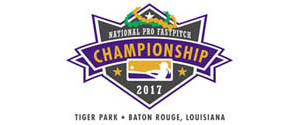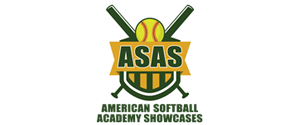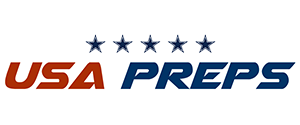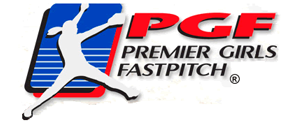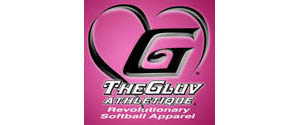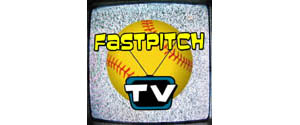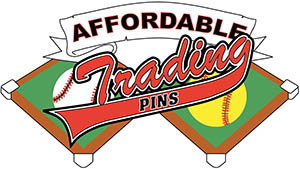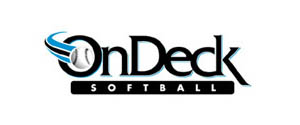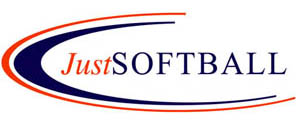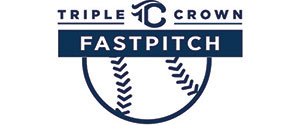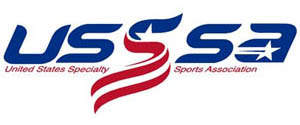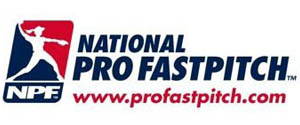Umpires in our area were instructed one year to call any pitch that the catcher misses a ball. Any pitch, regardless of position in the strike zone, that got past a catcher was a ball. They did this under the guise of self preservation.
They would tell them do yourself a favor and the other umps a favor, and strongly discourage balls bouncing off of umps.
Of course this is not in exact accordance with the rules. After a couple of weekends most teams, pitchers and catchers figured this out and adjusted accordingly.
Fastpitch Discussions
Cannonball wrote:2nd inning, I walk out to the ump as pitcher warm up and asked how my pitcher was missing? Umps response, she's entering the zone low at the knees and the ball is dropping. I ask, isn't that a strike? The ump says maybe so but the catcher isn't able to catch it there and so, it appears to everyone that the pitch is low. I again ask if it is at the knees. The ump says very calmly and I do appreciate the discussion, "Coach, you're not going to get that pitch today." I leave.
That's good because a pitch at the knees is not a strike
4th inning, ump strolls over. He starts the conversation about the difference on the riseball and the drop. He says that the other pitcher is entering the zone with borderline strikes at the waist. He says that he gets good looks at that pitch and so, it is a lot easier to call than the drop. Now, I haven't said anymore about strikes but have complimented my pitcher who continues to throw the drop. He suggest that we teach this young lady a better rise since most umps see it better than a very good drop OR AT LEAST, don't catch as many complaints. Having been approached, I asked if he didn't feel that he gave an advantage to the other team when both pitchers are throwing "borderline pitches." His statement was that he was consistent (and he was) and that knowing that, we should put in a riseball pitcher.
Well, whether he was correct or not, the umpire should have simply kept his mouth shut as to who you should teach what, etc. It is obvious that to anyone who doesn't know the game that it is easier to sell a strike that the catcher receives in the zone instead of a strike which seems to be out of the zone by the time it gets to the catcher's glove. Unfortunately, the umpire isn't back there to have it easy.
- MTR
- Posts: 2317
- Joined: Thu Jan 03, 2008 5:21 am
MTR wrote:That's good because a pitch at the knees is not a strike
MTR, please explain. The rulebook (NSA) says that the strike zone is where the ball crosses the "front knee" and goes on to further state that it doesn't matter where the ball hits or where it hits the catcher's mitt. (I'm paraphrasing some.) BTW, by "at the knees" I was referring to that area considered a strike by book definition as was agreed to by this ump. I'd check out the ASA BUT the ASA doesn't put their rules on line.
I know also that in the mid 90s, the strikezone was changed from the top of the knees to the bottom of the knees in ASA. However, it's been some time since I've sent in for my patch so that could have changed. Besides, we play a lot more NSA and USSSA ball around here.
The point of the post was that there is a circumstance where "consistent" isn't necessairly fair to both sides!
Granny said sonny stick to your guns if you believe in something no matter what because it's better to be hated for who you are than to be loved for who you're not.
CoachB25 on other boards.
CoachB25 on other boards.
-
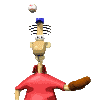
Cannonball - Posts: 260
- Joined: Sat Dec 29, 2007 7:43 am
- Location: A Park near you.
bradrhod wrote:Umpires in our area were instructed one year to call any pitch that the catcher misses a ball. Any pitch, regardless of position in the strike zone, that got past a catcher was a ball. They did this under the guise of self preservation.
Call the "guise" whatever you like but I bet there were some brutally long games. It's a relief though knowing the umpires were preserved.
They would tell them do yourself a favor and the other umps a favor, and strongly discourage balls bouncing off of umps.
Of course this is not in exact accordance with the rules. (That's an understatement) After a couple of weekends most teams, pitchers and catchers figured this out and adjusted accordingly.
I'm thinking they figured out more than you may realize.
- umpinva
- Posts: 360
- Joined: Sun Dec 30, 2007 6:47 pm
All in all I thought the umpiring we had this past weekend was exceptional and didn't want anyone to think that I'd blame the umps for anything. In fact, in all of the time I've coached high school sports, I'd say that the umps might MIGHT have cost me 2 games. I'm a fan of the men behind the mask.
We had one game this weekend where we had an ump that had obviously umpired for a looooong time. During the game, we have our pitcher throw to 2 zones or rectangles. One when ahead in the count and one when behind. I like to compliment my pitchers when they throw the ball in the correct rectangle or zone. Therefore, I often say great pitch when the ump calls a ball on the batter. After a couple of innings, the ump calls me over and says that he agreed and that our pitcher was really locating her pitches. I asked him if he understood that I was never questioning his calls. His remark, "Son, (I'm 50 years old) I've done this since ole heck was a pup. You're making her be a pitcher. Keep after it." I thought that it was a pretty neat compliment. Later, I offered to get him a water after the game was over. In doing so, he said that he was in the ASA Hall of Fame as an Ump. He is a true Gentleman and great ambassador for the sport!
We had one game this weekend where we had an ump that had obviously umpired for a looooong time. During the game, we have our pitcher throw to 2 zones or rectangles. One when ahead in the count and one when behind. I like to compliment my pitchers when they throw the ball in the correct rectangle or zone. Therefore, I often say great pitch when the ump calls a ball on the batter. After a couple of innings, the ump calls me over and says that he agreed and that our pitcher was really locating her pitches. I asked him if he understood that I was never questioning his calls. His remark, "Son, (I'm 50 years old) I've done this since ole heck was a pup. You're making her be a pitcher. Keep after it." I thought that it was a pretty neat compliment. Later, I offered to get him a water after the game was over. In doing so, he said that he was in the ASA Hall of Fame as an Ump. He is a true Gentleman and great ambassador for the sport!
Granny said sonny stick to your guns if you believe in something no matter what because it's better to be hated for who you are than to be loved for who you're not.
CoachB25 on other boards.
CoachB25 on other boards.
-

Cannonball - Posts: 260
- Joined: Sat Dec 29, 2007 7:43 am
- Location: A Park near you.
Cannonball wrote:The rulebook (NSA) says that the strike zone is where the ball crosses the "front knee" and goes on to further state that it doesn't matter where the ball hits or where it hits the catcher's mitt. (I'm paraphrasing some.) BTW, by "at the knees" I was referring to that area considered a strike by book definition as was agreed to by this ump. I'd check out the ASA BUT the ASA doesn't put their rules on line.
I was referring to ASA, ISF, NFHS, NCAA. However, your post is part of a reason why having rules on-line and quoted without instructions via clinics is not a great idea. What you read was the General Rules. The following is from the same PDF format of the NSA rules under the Fast Pitch and Modified Pitch rules:
Sec. 51 STRIKE ZONE: The strike zone is that space over any part of
home plate that is between the batter's armpit and the top of the
batter's knees when the natural batting stance is assumed. Any part
of the ball passing through this strike zone is considered a strike. The
umpire is instructed to determine the batter's strike zone according to
the batter's usual stance when swinging at a pitch.
I know also that in the mid 90s, the strikezone was changed from the top of the knees to the bottom of the knees in ASA.
Actually, I believe it was just the opposite.
The point of the post was that there is a circumstance where "consistent" isn't necessairly fair to both sides!
With which I completely agree.
- MTR
- Posts: 2317
- Joined: Thu Jan 03, 2008 5:21 am
"However, your post is part of a reason why having rules on-line and quoted without instructions via clinics is not a great idea. "
See, I disagree with this statement. The strikezone that is called should not require some secret handshake or some special clinic. It should be clearly stated and widley known. Baseball only calls the strike zone as it is exactly stated in the rulebook. There umpires are rated based on the strikezone as stated in the book.
Softball seems to want to have this changing strike zone, that is taught every year at the umpire clinics. Why is that? Why not just write it down somewhere and let people know what it is?
See, I disagree with this statement. The strikezone that is called should not require some secret handshake or some special clinic. It should be clearly stated and widley known. Baseball only calls the strike zone as it is exactly stated in the rulebook. There umpires are rated based on the strikezone as stated in the book.
Softball seems to want to have this changing strike zone, that is taught every year at the umpire clinics. Why is that? Why not just write it down somewhere and let people know what it is?
- bradrhod
- Posts: 59
- Joined: Wed Jan 02, 2008 3:45 pm
bradrhod wrote:"However, your post is part of a reason why having rules on-line and quoted without instructions via clinics is not a great idea. "
See, I disagree with this statement. The strikezone that is called should not require some secret handshake or some special clinic. It should be clearly stated and widley known.
No one makes a secret of the strike zone called and I guarantee that if the umpires ever went to the strike zone as written, coaches would go ballistic and players look like fools.
You daughter is not going to hit the ball just below the armpits very well anywhere. Do you honestly believe that any pitcher is going to be half as good as they presently are if they are forced to stick that ball within a 25-27 inch zone? You know that umpire who is constantly accused of have a "postage stamp" strike zone? That is what you will get full time if the umpires call the zone by the book.
Baseball only calls the strike zone as it is exactly stated in the rulebook. There umpires are rated based on the strikezone as stated in the book.
You're kidding, right? When was the last time you saw a chest-high pitch called a strike in a baseball game higher than LL?
Softball seems to want to have this changing strike zone, that is taught every year at the umpire clinics. Why is that? Why not just write it down somewhere and let people know what it is?
The zone hasn't changed and the umpires really don't want it to be changed. Umpires would love, LOVE to have a locked in zone, but as stated earlier, you would hate it if called by the book. The adjustments that you mention are not annual changes, but attempts to better explain what should be called. Whether the icon is a balloon, Chevy logo or whatever, it has always been bring the top down and bottom up about a ball's width and expand it out about the same.
The NCAA reacted to the constant complaints from the coaches about the strike zone and changed their definition of the "top" of the zone to the batter's sternum. Now, with all due respect to the players, how in the world is the umpire going to know where the player's sternum is and what will s/he use as a focal point? Here is what is going to happen somewhere in this country: A coach is going to complain about a high strike and tell the umpire s/he doesn't know the "new" zone. When the definition comes up, some smart-ass coach is going to lift up a player's shirt to show the umpire where the sternum is and then all the BS will hit the fan and somehow, the umpire will get the blame for embarassing the young lady.
I don't think things are as bad off as you believe or would want people to think. And, like I said, there are no secrets. It is all in black and white and openly discussed.
- MTR
- Posts: 2317
- Joined: Thu Jan 03, 2008 5:21 am
After reading at length, but again, without an ASA Rule Book, I've found some of the following:
Two different definitions of the strike zone from two different organizations:
“The top of the strike zone is the mid-level between the top of the batter's shoulders and the belt, and the bottom is at the level just beneath the knee cap. The right and left boundaries of the strike zone correspond to the edges of home plate (excluding the black edges of the plate). A pitch at which the batter does not swing and which does not pass through the strike zone is called a ball. Unofficially, the de facto enforced strike zone may be different at any different level; see "Enforcement" below.”
“The Strike Zone is defined as that area over homeplate the upper limit of which is a horizontal line at the midpoint between the top of the shoulders and the top of the uniform pants, and the lower level is a line at the hollow beneath the kneecap. The Strike Zone shall be determined from the batter's stance as the batter is prepared to swing at a pitched ball.”
From a History of the Strike Zone:
1996 - The Strike Zone is expanded on the lower end, moving from the top of the knees to the bottom of the knees.
NSA Rule word for word:
Sec. 40 STRIKE ZONE: The strike zone is that space over any part of the plate between the batter’s highest shoulder and his/her front knee when the batter assumes a natural stance. Where the ball contacts the ground or glove has no bearing on the actual strike zone.
MRT, having read the above and, again, playing NSA Rules, I don't believe my statement was in error on what constituted/s a strike.
When you mention attending clinics etc. in our state we are required to attend a clinic every year on the rules of the game. I've attended those clinics for some time now. I'm certainly not new to coaching but won't bore you with a resume. I do believe from the tone of your post that you don't think much of coaches.
Perhaps the best point made in this thread is the width of the ball and that if a ball is "at the knees" then a portion of that ball has to be at that point just above the kneecap. As with the white of the plate, if any fraction of that ball crosses the white of that plate, then, it is a strike provided it is of the proper height. (That is unless anyone would suggest that a hitter could go to the back of the batter's box, put their feet together and stand there forcing the ball to travel that deep into the batter's box. Then again, the depth of where the hitter stands is not to influence the call.)
Two different definitions of the strike zone from two different organizations:
“The top of the strike zone is the mid-level between the top of the batter's shoulders and the belt, and the bottom is at the level just beneath the knee cap. The right and left boundaries of the strike zone correspond to the edges of home plate (excluding the black edges of the plate). A pitch at which the batter does not swing and which does not pass through the strike zone is called a ball. Unofficially, the de facto enforced strike zone may be different at any different level; see "Enforcement" below.”
“The Strike Zone is defined as that area over homeplate the upper limit of which is a horizontal line at the midpoint between the top of the shoulders and the top of the uniform pants, and the lower level is a line at the hollow beneath the kneecap. The Strike Zone shall be determined from the batter's stance as the batter is prepared to swing at a pitched ball.”
From a History of the Strike Zone:
1996 - The Strike Zone is expanded on the lower end, moving from the top of the knees to the bottom of the knees.
NSA Rule word for word:
Sec. 40 STRIKE ZONE: The strike zone is that space over any part of the plate between the batter’s highest shoulder and his/her front knee when the batter assumes a natural stance. Where the ball contacts the ground or glove has no bearing on the actual strike zone.
MRT, having read the above and, again, playing NSA Rules, I don't believe my statement was in error on what constituted/s a strike.
When you mention attending clinics etc. in our state we are required to attend a clinic every year on the rules of the game. I've attended those clinics for some time now. I'm certainly not new to coaching but won't bore you with a resume. I do believe from the tone of your post that you don't think much of coaches.
Perhaps the best point made in this thread is the width of the ball and that if a ball is "at the knees" then a portion of that ball has to be at that point just above the kneecap. As with the white of the plate, if any fraction of that ball crosses the white of that plate, then, it is a strike provided it is of the proper height. (That is unless anyone would suggest that a hitter could go to the back of the batter's box, put their feet together and stand there forcing the ball to travel that deep into the batter's box. Then again, the depth of where the hitter stands is not to influence the call.)
Granny said sonny stick to your guns if you believe in something no matter what because it's better to be hated for who you are than to be loved for who you're not.
CoachB25 on other boards.
CoachB25 on other boards.
-

Cannonball - Posts: 260
- Joined: Sat Dec 29, 2007 7:43 am
- Location: A Park near you.
You're kidding, right? When was the last time you saw a chest-high pitch called a strike in a baseball game higher than LL?
That's not the rulebook any more, at least not in MLB. Forget the exact phrasing, but it is a spot half-way between belt and sternum.
The zone hasn't changed and the umpires really don't want it to be changed.
Rule book HAS changed in MLB, and umpires are evaluated - the bottom 10% are in danger of being fired each year - based on calling it. Using technology present in every MLB park that is acurate within 1/8 of an inch.
And I believe the softball rulebook changed this year, didn't it? I remember reading something about sternum rather than armpits.
Regards,
Scott
-

ssarge - Posts: 566
- Joined: Tue Jan 01, 2008 6:13 pm
46 posts
• Page 3 of 5 • 1, 2, 3, 4, 5




